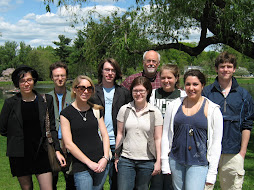
The chimney experiment on the UConn Depot Campus (Photo by Justin Maher)
Story by Dora Wilkenfeld, Gregory Hebert, Kendra Richardson, Mary Powers and Rafael Wilson.
Margaret Rubega flaps her arms vigorously, emitting a series of shrill squawks, demanding a mouthful of nutritious, regurgitated mosquitoes and gnats.
"When they get hungry, it's the loudest one that gets fed first," she says, still wiggling her fingers in imitation of as-yet unfeathered wingtips. It's her impression of a juvenile chimney swift, a bird sometimes mistaken for a flying cigar but infinitely more at home up a flue than tucked inside a humidor.
Rubega, the Connecticut state ornithologist and a professor at the University of Connecticut, is an expert on these little, swallow-shaped birds. She is also worried about their chances of survival.

Margaret Rubega (Photo by Samantha Henry)
“We have good data that says that the population of chimney swifts is declining in Connecticut by 1 percent per year,” said Rubega. Should the chimney swifts disappear, she said that we would lose a "gigantic invisible ecological advantage.” An adult swift can eat around 1,000 to 2,000 bugs a day. In an age of worry over West Nile virus and other insect-borne sicknesses, swifts offer a natural solution to chemical-laden repellents.
On-site at the UConn Depot Campus, she adeptly points out a few swifts as they plunge and dart in and out of a host of other, more sedate fliers, on a breezy May afternoon. "They're very aerial birds, pretty common in the state," she says. "They're spectacular fliers--there's nothing more acrobatic."
Many people may be uncomfortably familiar with these winged daredevils. Though they are an indigenous species, adapted to nesting in big, hollow old-growth trees, the arrival of European settlers in the Northeast radically changed their living arrangements, throwing them into a much closer cohabitation with humans than before.
As their name suggests, the swifts now typically choose to nest in people's chimneys. The sound of a batch of newly-hatched chimney swift chicks, all clamoring for some insectoid treats as Rubega demonstrated, can be slightly unnerving. Just as unsettling can be the "woosh!" of swift wings swooping around somewhere up the chimney. In spite of the initial discomfort at hearing an animal somewhere up there, inadvertently hosting some swift nests is not a fire hazard, and is good for the birds--and for naturally keeping down insect numbers.
Uniquely adapted to landing only on vertical surfaces, the birds "helicopter" around inside chimneys when they're learning to fly, and they never settle down on the ground or perch on a twig for a moment's rest. "They're an on-off kind of a bird... with them it's all or nothing," Rubega says. Unfortunately, this description may also apply to their survival in the wild.
No one is sure why swifts are disappearing in North America, but it might be because people are choosing to cap their chimneys, keeping wildlife out, or increasingly opt to build homes without chimneys altogether. The fact that the swifts' natural habitat is man-made sets them apart from other vulnerable species. "This may be one of the very few cases of providing wildlife with what it needs without tying up land," Rubega says.
Rubega and her team received a grant from the Connecticut Department of Environmental Protection to experiment with designs for artificial chimneys that the swifts could nest in. “We wanted them to be $100 or less to make, movable, can be assembled with simple hand tools, and meet all the bird’s requirements” said Rubega.
The eight-foot tall towers are made from plastic drainage pipe, and painted white to reflect the sun. The interior is lined with pine board to make it easier for the swifts to attach a nest.
“What we came up with was this nice, post modern rocket ship look,” said Rubega, “although it’s probably not something you’d want to put in the back yard of a Victorian house.”
No birds chose to build nests in the prototypes last season, but Rubega and others are continuing with their research this summer.
She says the world cannot afford to lose a species like the chimney swift.
"Do we value diversity for its own sake?" she asks. If the number of healthy, thriving wildlife species were like crayons, coloring our New England nature with their variety, "We'd have to decide if we want an eight-box or 64-box or 200-box world."

No comments:
Post a Comment